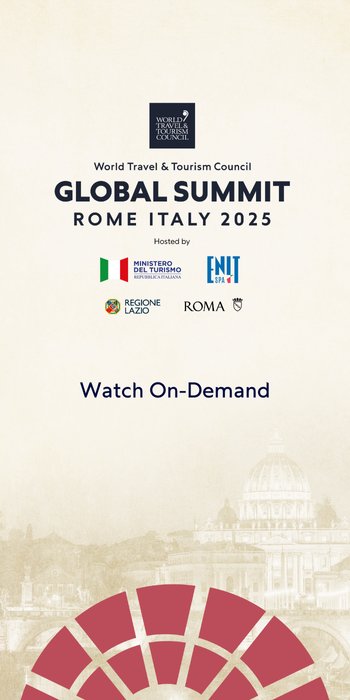US to face significant $12.5 billion decline in international visitor spending

The World Travel & Tourism Council (WTTC) has released its latest Economic Impact Research (EIR) revealing that the US is set to face a significant $12.5 billion decline in international visitor spending this year. According to the report, overseas visitor expenditure in the U.S. is expected to dip to just under $169 billion in 2025, compared to $181 billion in 2024. The report further highlights key data points on the sector’s economic impact, visitor spending habits, and environmental and social footprints.
Sign in to access actionable insights
The World Travel & Tourism Council (WTTC) has released its latest Economic Impact Research (EIR) revealing that the US is set to face a significant $12.5 billion decline in international visitor spending this year. According to the report, overseas visitor expenditure in the U.S. is expected to dip to just under $169 billion in 2025, compared to $181 billion in 2024. The report further highlights key data points on the sector’s economic impact, visitor spending habits, and environmental and social footprints.
Economic projections and job growth
In 2025, the total contribution of the Travel & Tourism sector to the US GDP is forecast to be $2.6 trillion. This represents an annual increase of 0.7% and is 9.9% higher than in 2019. Looking ahead, the sectors GDP contribution is projected to reach $3.2 trillion by 2035. The sector is also a major source of employment as in 2025, it is expected to support 20.6 million jobs, an increase of 1.1% from 2024. This figure is projected to grow to 23.5 million jobs by 2035, adding 2.9 million new jobs over the decade.
Visitor spending trends
Domestic travel continues to be the backbone of the US tourism sector, accounting for 89.2% of total visitor spending in 2024. In 2025, domestic visitor spending is forecast to reach $1.5 trillion, a 1.1% increase from the previous year. International visitor spending is set to decline to 6.9% in 2025. After a period of decline, international spending is projected to see a significant compound annual growth rate of 4.1% between 2025 and 2035. In 2024, the top sources of inbound international visitors were Canada (28%), Mexico (23%), and the United Kingdom (6%).
Environmental and social dimensions
The Travel & Tourism sector is also making strides in environmental sustainability. The sector's greenhouse gas (GHG) emissions per dollar of GDP decreased from 0.38 kgCO2e in 2019 to 0.32 kgCO2e in 2024. In 2024, the sector's energy mix was composed of 88.2% fossil fuels, 6.6% biofuels and waste, and 5.2% low-carbon energy sources.
From a social perspective, it is a significant employer for women and young people. In 2024, women constituted 47.4% of the direct employment in the sector, while youth (15-24 years) accounted for 23.7% of the workforce. Additionally, 25.5% of the direct employment in the sector was in high-wage jobs. The sector also contributed $666 billion in tax revenues in 2024.
SMEs can lead the change
For small and medium-sized enterprises (SMEs), the report is a roadmap. As domestic travel spending surges, so does the appetite for local, personalised, and meaningful experiences that only smaller businesses are agile enough to deliver. SMEs can adapt quickly, offer unique value, and form deeper connections with travellers.
Whether it’s a boutique hotel offering immersive cultural stays, a local food tour company showcasing hidden culinary gems, or a tech startup simplifying travel logistics, SMEs have the edge when it comes to authenticity and innovation. By tapping into rising trends like sustainable travel, wellness tourism, and hyper-local experiences, they can stand out in a crowded market. Partnerships with regional tourism boards, smart use of social media for visibility, and investments in customer-centric digital tools can further amplify their reach. With the right positioning, SMEs have a real shot at not just participating in the travel rebound but leading it in fresh and unexpected ways.
With billions pouring into the tourism sector in USA, the ripple effects stretch from airlines and hotels to local artisans and tour guides. This isn’t just a win for the economy; it’s a call to action for businesses of every size to rethink how they engage with travellers. For those ready to adapt, the next era of tourism in America offers massive potential and room for smart, strategic growth.

















